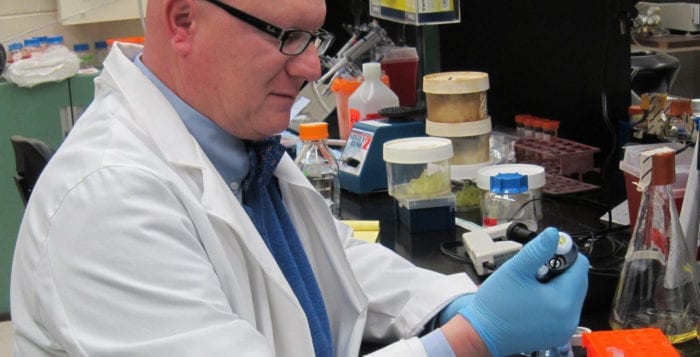An associate professor from Stony Brook University, who has been placed on administrative leave, is pleading not guilty to charges that he allegedly stole thousands from funds that were allocated for cancer research.
The United States Attorney’s Office, Eastern District of New York, announced Sept. 12 that Geoffrey Girnun, an associate professor at Renaissance School of Medicine at Stony Brook University, had been arrested and indicted for stealing more than $200,000 in cancer research funds, allegedly using the stolen funds in part to pay his mortgage.
One of Girnun’s attorneys, Steven Metcalf II of Metcalf & Metcalf P.C. in Manhattan, said in an email statement that he is asking that the public does not rush to judgment.
“Mr. Girnun’s defense team, including attorney Steven Siegel and my firm, are still putting all the pieces together,” Metcalf wrote. “We will continue to challenge the validity of these charges and whether the facts are fundamentally flawed. Once all the smoke clears there will be a completely different picture of Mr. Girnun, who is a family man, a loving husband and a Harvard-educated professional entirely devoted to his family and work.”
SBU officials are shocked over the alleged actions.
“The university is outraged and appalled by the allegations that led to the arrest of Geoffrey Girnun today,” an official statement from the university read. “This alleged behavior is absolutely contrary to the ethical and professional standards expected of our faculty. The university has fully cooperated with the investigation and at this time is considered by the FBI as a victim in this matter.”
The professor was charged in a seven-count indictment with theft of state and federal government funds, wire fraud and money laundering. He allegedly submitted fraudulent invoices for research equipment to SBU from sham companies he created to conceal his theft of funds from cancer-related research grants issued by the National Institutes of Health and SBU.
“Professor Girnun’s alleged theft of federal and state grant funds earmarked for cancer research can be explained in two words: pure greed,” said U.S. Attorney Richard Donoghue in a statement. “He will now be held to account in a federal courtroom.”
Scott Lampert, special-agent-in-charge from the U.S. inspector general’s office,was in attendance when the charges were announced.
“Taxpayers fund medical research with the hope that promising scientific breakthroughs will result in much-needed treatments and cures for patients,” Lampert said. “Because the money for medical research is limited and the need for scientific advances is great, it’s incredibly important to clamp down on those who would steal such grant money for personal gain.”
If convicted, Girnun faces up to 20 years imprisonment.
Girnun was featured in a March 25, 2015, TBR News Media article. At the time, the researcher was exploring the role of different proteins that either promote or prevent various cancers. The one particular protein in the liver cell he was studying is one that classically regulates the cell cycle, according to the article.
Girnun discovered that the protein promotes how the liver produces sugar, in the form of glucose, to feed organs such as the brain under normal conditions. In diabetic mice, the protein goes back to its classic role as a cell cycle regulator.
Girnun made the move to SBU from the University of Maryland in 2013 and said at the time he was inspired by the opportunity to create something larger.
“I want to build a program in cancer metabolism,” he said. “I want to build something beyond my own lab.”
At the time of the 2015 article, Girnun was temporarily commuting from Maryland. The statement from the U.S. Attorney’s Office now lists him as a resident of Woodmere.
Girnun is scheduled to return to court Oct.4 after being released on $250,000 bond.
This article was updated Sept. 18 to add a statement from Girnun’s attorney.







